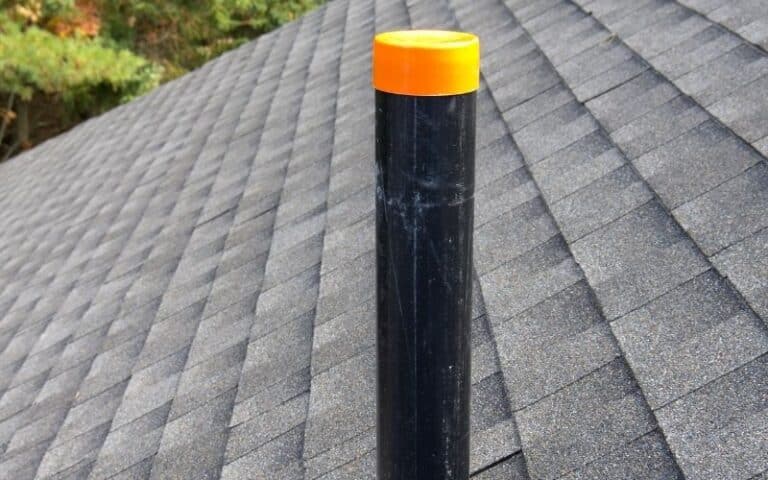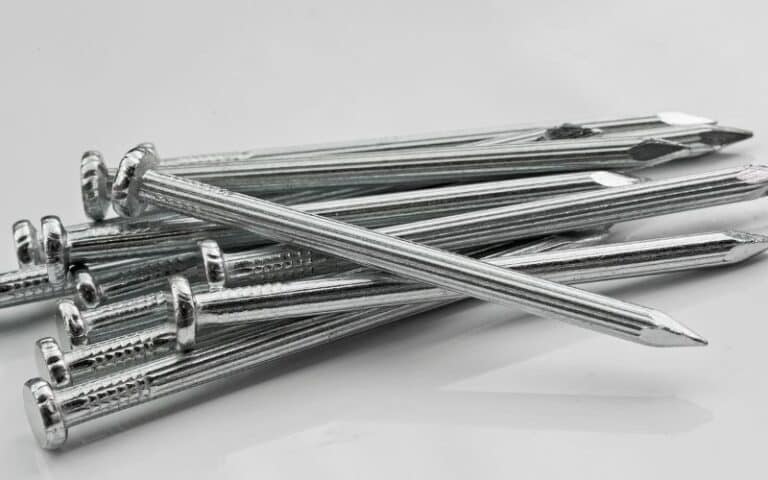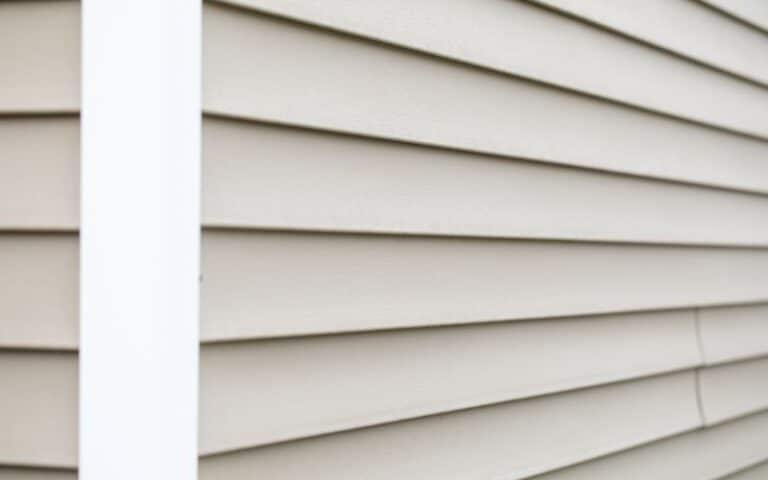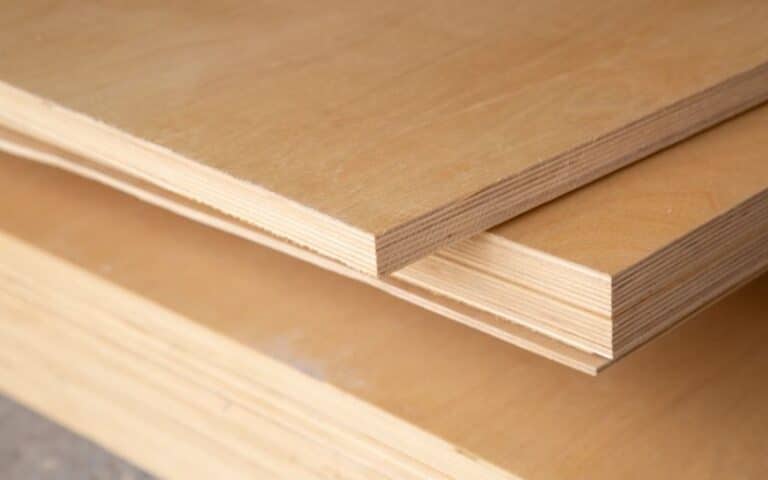When constructing a building, there are many factors and objectives to consider. One of these objectives is to ensure that the buildings last as long as possible.
We usually follow up on this by putting in efforts to protect it from the elements. The Tyvek house wrap is a tough, long-lasting product that can help achieve this protection.
You can use staples on Tyvek as a fastener since Dupont Tyvek wrap does not have an adhesive side. Nails, nail guns, staplers, and house wrap tape are also used on Tyvek wraps. Staples and cap nails are the most effective fasteners for wraps. Compared to nails, staples are preferable because they require less time for installation.
Ready for a Roofing Quiz?
Can I Staple Tyvek House Wrap?

Dupont Tyvek House Wrap is made of high-density polyethylene fibers. These fibers are layered and compressed to form a building envelope system.
This system helps to act as an air barrier between the interior and exterior of the building. It blocks the flow of air and water on the outside while allowing water vapor to go out from the interior.
It also ensures that you can use nails or staples to fasten the wrap.
There are many reasons why people tend to use staples instead of nails. The most common is that it is less time-consuming.
Another reason for this is that it reduces the chances of house wrap tearing. A third reason is that it increases the holding power of the wrap.
Since there are different types of Tyvek systems, the stapler to use also varies based on efficiency. It is better to install the Dupont Tyvek weather barriers using the Spot nails Crossfire Cap stapler.
The perfect staples to use with this stapler are the Dupont Tyvek Wrap Cap staples. With the Dupont Tyvek HomeWrap, the Stinger cap hammer is the best choice.
It is also possible to use wrap cap staples, particularly the 3/8 inches coated staples.
Can I Use Regular Staples on Tyvek?
Even though staples have the same basic design, there are different types. Each one is different from the other in terms of wire dimensions.
These dimensions can be fine, medium, or heavy. Fine wires are used to make regular staples. The reason is that they are used for discrete operations like in upholstery.
Because of this, they are not suitable to be used in construction. The staples most suitable for installing house wraps are heavy wire staples.
These staples also vary in length. It is necessary to take note of the staple length. This helps guarantee that the material is fastened properly.
There is a tip for choosing the staple length for house wrap application or any other function. One must first measure the thickness of the material.
The appropriate staple length to use is that which is twice or three times the thickness of the material.
Cap staples and nails are suitable for installing the Tyvek house wrap, especially when used with the right staplers. They can go in at a perfect depth that is not too deep or too shallow.
When used with the right staplers, there is also an increase in inefficiency. Using capped fasteners also ensures ease of removal should there be a need for replacement.
What Do You Attach Tyvek with?
Tyvek Home Wrap can be attached using a staple gun if you use staples. If you are using nails, they can be attached using cap nails.
It would help if you also used Dupont Tyvek tape to hold the overlaps down. Installing the house wrap is fairly easy to do. Depending on how big the building is, one person can conveniently handle it.
The following steps can help you in installing your home wrap:
- Ensure you have all that you need for the installation. These include the right fasteners, Tyvek House Wrap tape, and house wrap.
- Position the house wrap against the wall. It is advisable to leave out an overlap of about six inches at a corner.
- Proceed to unroll and fasten the wrap to the wall. Tyvek advises that you should use four staples or nails in every square yard. To make work easier, two people can do this. Where one person works the fasteners, the other holds the wrap taut against the wall. This helps to prevent wrinkles or tears on the wrap.
- Continue the fastening until all the walls, doors, and window frames are covered. The wrap covering the windows and doors should be cut open into X and I shapes. Then tuck in the cut material to cover the frames.
- The last step is to cover all overlapping sets with Tyvek tape. Another use for the tape is to cover up any perforations accidentally made on the wrap.
How Do I Fasten Tyvek House Wrap?
You can fasten the Tyvek house wrap with several types of fasteners. The choice of fasteners depends on the framework of the construction. The most common frameworks are wood, steel frame, and masonry.
For the wood frame, you can use cap nails or cap staples. Steel frames work best with screws and metals gasket washers. These metal gasket washers usually range between 1 to 2 inches.
In the case of masonry construction, it is advisable to use Tapcon fasteners with 2 inches plastic caps.
It is advised that a permanent fastening system be used during installation. This system helps to ensure the system’s integrity and boost the longevity of the house wrap.
However, for some reason, the fastening might be temporary. In this case, staples without caps, like slap staples, can be used. But you should make sure that a permanent system is installed as soon as possible.
There are at least three different types of staplers that can be used to install the Tyvek house wrap. Each one of these staplers has its advantages and disadvantages.
They are listed below.
#1. Hammer Tacker
As the name goes, the hammer tacker has a firm grip and a strong stapler head. The staples are driven into the house wrap by hitting the stapler hard against the material.
It is easy to use and can carry many staples at a time. The drawback to the hammer tacker is the lack of consistency in staple depth.
This inconsistency occurs because the staple depth depends on how hard one can swing the hammer. Therefore, if swung very hard, there is a chance that the Tyvek would be punctured.
#2. Staple Gun
The staple gun can also be called a powered stapler or a trigger tacker. When the spring mechanism is triggered, it leads to a release of the staples within.
The drawback to the staple gun is the energy it takes to trigger the spring mechanism. When used over a long time, the hand can start cramping up, making it hard to continue working.
#3. Pneumatic Stapler
The pneumatic staple gun is like the staple gun described above. It looks like a gun and has a trigger that leads to a release of staples.
The main difference is that instead of relying on mechanical force, the pneumatic stapler relies on compressed air. The pneumatic system helps to facilitate the rapid firing of the staples.
Thereby making it the easiest, fastest, and most efficient stapler to use.
Conclusion
One thing is essential to guarantee the longevity of the Tyvek Home Wrap. The wrap should not be left exposed to the sun for too long.
If you want to replace an existing wrap, taking down the old wrap is a matter of preference. It does not affect the effectiveness of the new wrap.






